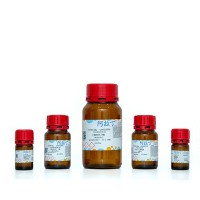Behavioral Sensitization to Addictive Drugs: Clinical Relevance and Methodological Aspects
互联网
670
Sensitization to the locomotor stimulant effects of abused drugs provides a behavioral measure thought to reflect underlying neural adaptations to repeated drug exposure. Neurochemical measures have provided information about the specific neural systems impacted and altered by repeated drug exposure. In pre-clinical studies, sensitized animals exhibit facilitated acquisition of drug self-administration and preference for cues associated with past drug experiences. This has suggested a role for sensitization in the development of drug abuse and in relapse. In humans, self-reports of sensitized vigor and energy levels have been described that may relate to the more direct measurements of locomotor sensitization in animals. Described in this chapter are methods used to measure psychomotor sensitization in mice, which are partially dependent upon the drug under investigation. The advantages to the use of mice in pre-clinical research are (1) that they readily sensitize to all drugs of abuse, (2) many methods have been developed for studying other aspects of their behavior that may be related to sensitization, and (3) they are an excellent species for genetic investigations aimed at determining susceptibility to behavioral sensitization and thus neuroadaptations related to drug abuse. Factors to consider when designing a study of drug-induced psychomotor sensitization include dose, number of treatments, frequency or interval between treatments and challenge, and duration of testing. First, a measure of baseline level of activity should be obtained, followed by measurement of the initial drug effect, measures of the change in initial effect with repeated administration, and a subsequent measure of baseline to see how it may have changed after repeated drug testing. Depending upon the goal of the research, a drug withdrawal period may be desirable, followed by another drug challenge to determine whether sensitization is still present. Such a withdrawal or “incubation” period has been instated to allow for the establishment of long-term central nervous system changes that may accompany sensitization in studies of mechanism. The recommended frequency of dosing is dependent upon characteristics of the drug, particularly its clearance rate. More intermittent schedules of administration are particularly important for inducing robust sensitization to classical psychostimulant drugs like cocaine and methamphetamine. The recommended duration of testing is influenced by the duration of drug effect, but data should be collected in isolated time units so that the time response curve can be examined. Finally, associative conditioning and stress-related factors can have large impacts on sensitization and should be carefully considered in all aspects of the research design, including whether drug treatment is linked to the test environment or not, density of housing, and specifics of handling.









